Private pilots can fly out to visit Astoria Oregon and enjoy a variety of great summer-fall activities.
95 miles northwest of Portland, the Northwest’s biggest river, the Columbia, meets the massive Pacific Ocean. When you imagine the millions of salmon that historically swam up this river (some of them destined to travel over 900 miles east and over a mile high to spawn in tiny Idaho creeks), you realize it was inevitable that a fishing town would spring up here. Nowadays, the canneries have given way to kayak and gift shops, restaurants, and a gorgeous waterfront hotel.
These pleasures are best enjoyed summer through fall. Founded over 200 years ago, Astoria has seen boom and bust and is loaded with character—and characters. This old town’s Victorian mansions, hip restaurants, and a long wharf have lent it the nickname “Little San Francisco.” Fly into Astoria Regional Airport, just minutes from town, and experience it for yourself.
Flying to Visit Astoria Oregon
Astoria Regional Airport (AST) is in the northwestern corner of Oregon, just south of the Columbia River, which forms the border between Oregon and Washington. Astoria is a short hop from either Portland or Seattle. From the southeast, a heading of 274° from the Battle Ground VORTAC (116.6 MHz) will take you directly to AST. South of Portland, contact Portland Approach on 118.1 MHz; north of Portland, contact Portland Approach on 124.35 MHz. Don’t enter the Portland Class C airspace unless you’ve established two-way radio contact with ATC. Approaches from the Seattle area are straightforward as well, as long as you remain clear of the MOAs and Restricted Areas just east of Olympia Regional (OLM). Approach and Departure services are provided by Seattle Center at 124.2 MHz.
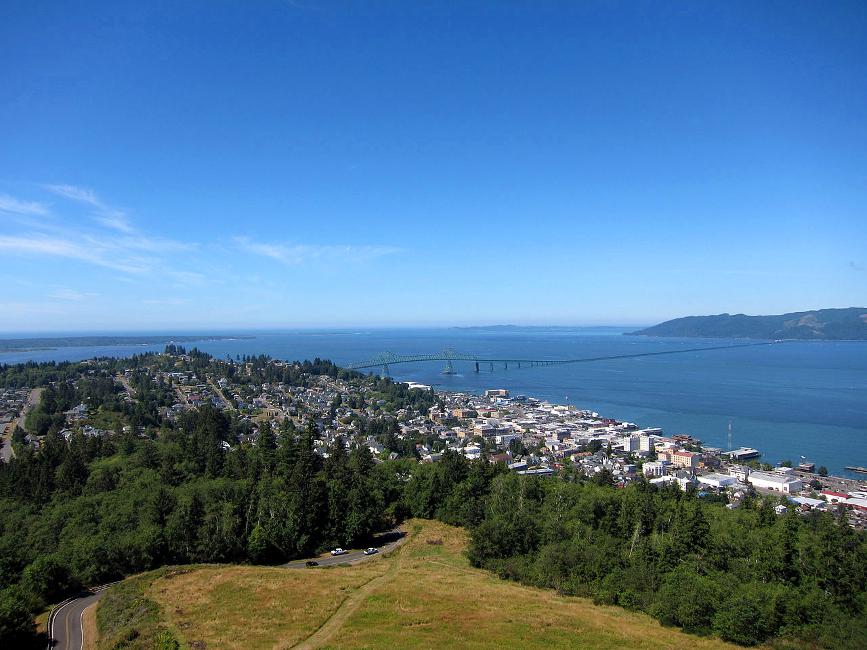
As you approach Astoria, use caution for four towers east of the field that are scattered around the city and rise to as high as 752 feet MSL. The untowered Astoria airport has a pair of runways that intersect toward the northwest. Make position reports on 122.8 MHz, watch for traffic, and be sure you’re lined up on the correct runway. Watch for intersecting takeoffs or landings. There’s an ILS approach to Runway 26, a VOR approach to Runway 8, and RNAV (GPS) approaches to both 26 and 8. Departure procedures will have you turning west, away from the aforementioned towers. The Port of Astoria, adjacent to Taxiway Bravo, provides both self- and full-serve 100LL, plus full-serve Jet-A. Overnight tiedowns are $5 and a courtesy car is available on a first-come, first-served basis. It needs to be returned before 5 p.m. the same day. Hertz rental cars are available on the field, call 503-325-6500, FBO open daily 8 a.m.–5 p.m., 503-861-1222, //www.portofastoria.com/Pilot_Information.aspx
Deals on Hotels From our Sponsor:
Booking.com
History of Astoria Oregon
In December 1805, the Lewis & Clark Expedition landed near present-day Astoria and built a small fort to the south, along the Lewis and Clark River (then called the Netul River). Fort Clatsop, as they called it after the local people, would be their shelter for the winter. But incessant rain poured nearly nonstop misery on the group, and they were happy to leave the following spring.

Just five years later and with encouragement from Thomas Jefferson, wealthy fur merchant John Jacob Astor financed overland and overseas expeditions to build a fur-trading settlement on the Pacific Coast. Over a three-year period, separate groups of mixed Americans, French, and Scottish Canadians set out for the coast. The idea, audacious for its time, was to create an outpost from which to circumnavigate between China, Europe, and the eastern U.S., to take advantage of the rage for otter pelts. For both the land and sea expeditions, every hardship from weather to Indians to disease seemed to target the men, and about half died. Fort Astoria was built in 1811 at the mouth of the Columbia River and later helped establish American claims during the Oregon boundary dispute with European countries, but the grand master plans never came to fruition.
In the early 1830s, Astor invited prominent author Washington Irving to stay with him and write a novel about the Pacific Fur Company. Astoria, published in 1835, was widely read and implanted the area’s importance in the minds of many Americans. In 1847, Astoria received the first U.S. Post Office west of the Rockies. Immigrants, particularly from Finland and China, flocked to Astoria in the late 1800s. The Finns, mostly fishermen, and the Chinese, who mostly worked in the canneries, altered the area’s history soon thereafter.
Around 1876, disputes about fish prices began between fishermen and wealthy cannery owners, and the fishermen went on strike. In 1880 the fishermen formed the Columbia River Fishermen’s Protective Union. During another strike in 1896, two fishermen were shot and more violence seemed ready to break out. The Oregon National Guard was called in to break the strike. After this, about 200 mostly Finnish fishermen pooled their cash and formed the Union Fisherman’s Cooperative Packing Company. Soon, it was Astoria’s largest canning company, and remained a fishermen-owned business into the 1940s.
Astoria became a major port, with goods shipped on barges inland as far as Lewiston, Idaho. The Burlington Northern and Santa Fe Railway brought goods from across the continent for export. In 1966, the Astoria-Megler Bridge across the Columbia River connected Oregon and Washington and eliminated the need for ferries. According to the Pacific Northwest Chapter of the National Railway Historical Society, “In 1978, the line to Seaside was abandoned. The bridge over Young’s Bay was decaying, and by the late 1980’s all track west of Astoria had been removed. In the early 1990’s, the Burlington Northern wanted to get rid of the line into Astoria due to high property taxes and little traffic. Astoria wanted the line retained. Therefore, the city obtained the line, and today operates its city streetcar over the line.”

Two centuries of seafaring have taken their toll. Many have discovered that weather, waves, and tides could turn the Columbia River into a raging witch within minutes. Over 2,000 ships have met their end in the waters around Astoria, as well as over 700 people. Dense fog, 40-foot waves, and a shifting sandbar at the river’s mouth, the Columbia Bar, all have exacted the ultimate price for some unlucky sailors. Nowadays, however, tourism and art are the major economic drivers in this charming seaside town.
Things to Do When You Visit Astoria Oregon
There is plenty to do and see when you visit Astoria Oregon. See the wharf in style on a rebuilt 1913 trolley called Old 300. The red trolley with curved seats trundles down the wharf for 3.5 miles, past old ferry slips and a blue-and-orange building that was once an experimental seafood laboratory. Check out the underside of the Astoria-Megler Bridge; for just $2 you can hop on and off as you wish, April 17-May 24: Fri/Sat/Sun only 12-6 p.m.; May 25-Sept 7: Daily 12-6 p.m.; Sept 11-winter closure: Fri/Sat/Sun only 12-6 p.m.; www.Old300.org
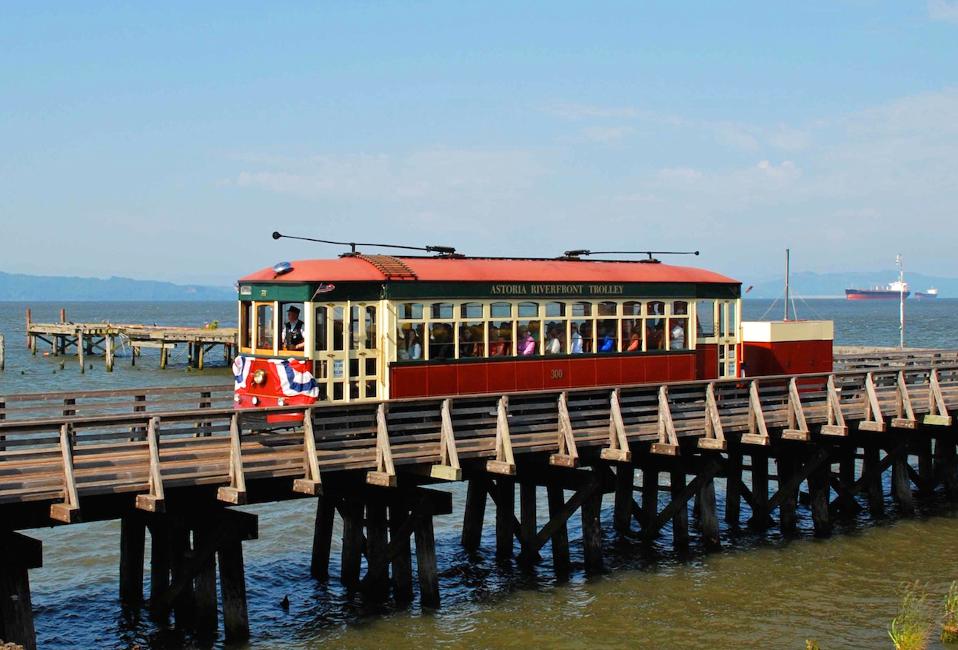
At Fort Stevens State Park, you can see the wreck of the Peter Iredale, resting in the sand where it was abandoned. It’s a great spot to practice your photography techniques. The Fort was a primary military defense installation from the Civil War to the end of World War II. Check out the fort, go beachcombing, hiking, or swim in the lake. You can camp here year round. Campsites range from $21 for a tent, to $29-32 for an RV. Yurts and cabins are also available, and range from $45-99, including some that accept pets. Fort Stevens State Park Website, Full list of Rates.
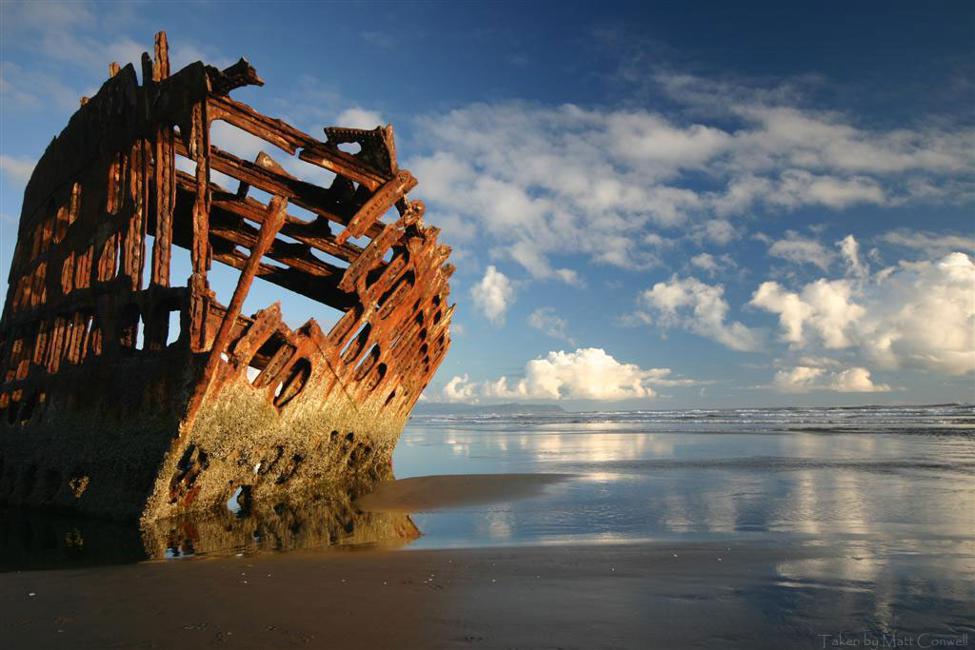
Stroll down the Astoria Riverwalk, a pedestrian path along the wharves, to the Columbia River Maritime Museum, the first museum in Oregon to meet national accreditation standards. Its collection includes the lightship Columbia, the bridge of the WWII-era destroyer USS Knapp, a third-order Fresnel lens, and several Coast Guard and gillnet vessels.
Other artifacts include models, paints, uniforms, gear, and instruments. An interesting film shows expert bar pilots working the dangerous Columbia River Bar. Nearby, the Barbey Maritime Center offers classes on woodcarving, boatbuilding, bronze casting, and other traditional seafarer’s crafts. Named in honor of the Barbey family, the historic 1925 Astoria Railroad Depot has been transformed and is dedicated the preservation of traditional maritime skills and trades. Here, copper boat nails essential to the construction and repair of traditional Scandinavian-style lapstrake boats are manufactured. Call the museum for class information, museum admission $5–$12, open 9:30 a.m.–5 p.m., 1792 Marine Dr., 503-325-2323, www.CRMM.org
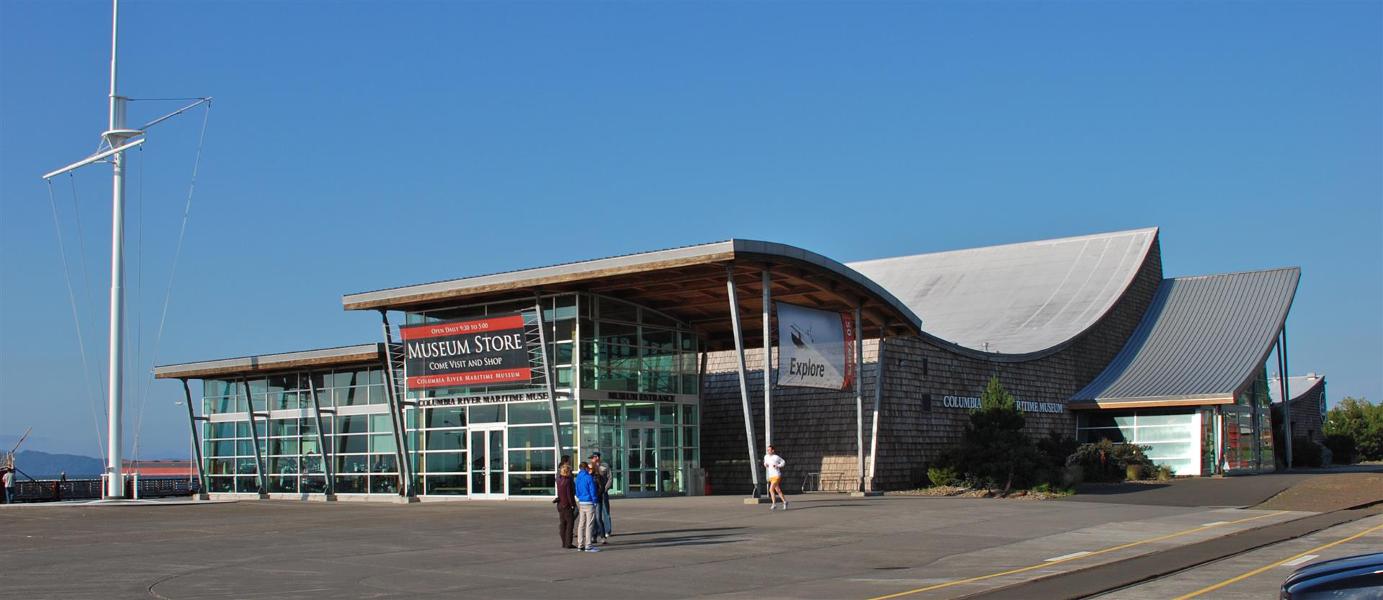
The Lewis and Clark National Historical Park preserves the history of Fort Clatsop, if not the original building—it rotted away and was rebuilt in 1955, and again in 2006, from a floor plan drawn by Clark on the elk-skin cover of his journal. Outside, you can spend time walking among ferns on the picturesque South Slough Trail. In summer, you can join a park ranger on a canoe paddle along the lush riverbanks of the Lewis and Clark River, which is free with $3 park admission. In January of next year, the park admission will increase to $5. 92343 Fort Clatsop Rd., 503-861-2471, www.NPS.gov/lewi/index.htm
Downtown Astoria has more history; the Clatsop County Historical Society’s Heritage Museum is home to over 32,000 artifacts, including vintage canning labels and a full-size reconstruction of the Louvre saloon, where 18th-century men spent substantial portions of their hard-earned cash. Check out the roulette wheel, card tables, and old menus. Open 10 a.m. to 5 p.m. daily (Last Entry at 4:30) May thru September; Open 11a.m. to 4 p.m. daily, October thru April; Admission is Adult $6.00, AAA/Senior/Student $5.00, Youth (6-17 years) $2.00, Children Under Six No Charge.
The Historical Society also operates the Flavel House Museum, a nationally-significant Queen Anne-style Victorian mansion that was home to Captain George Flavel and his family. Flavel was a successful river bar pilot and real estate investor. Open 10 a.m. to 5 p.m. daily, May thru September; Open 11 a.m to 4 p.m. Tuesday thru Saturday October through April; Archive & Research Library are open to the public Tuesday thru Friday from 10 AM to 3 PM. Admission is Adults $4.00, Youth (6-17 years) $2.00, Research Pass (for 2 weeks) $5.00, 503-325-2203, www.Cumtux.org
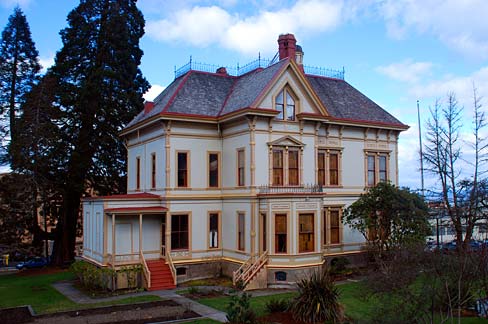
Dedicated in May of 2014 to celebrate Astoria’s 200th anniversary in 2011, Heritage Square’s Garden of Surging Waves is a city park designed to celebrate Astoria’s Chinese heritage. You’ll find quotes from Confucius and Lao Zi, as well as bronze scrolls designed to weather over time. Mosaic tiles, translucent panels, and hand-carved dragons etched into marble poles all invite contemplation, www.AstoriaChineseHeritage.org
The city’s most famous landmark is the Astoria Column, across town and atop Coxcomb Hill. Built in 1926 and financed by the Great Northern Railway and Vincent Astor, the great-grandson of John Jacob Astor, the column rises 125 feet and includes an interior spiral staircase that leads to an observation deck on top. The spiral frieze on the outside shows 14 significant events in Oregon’s early history, with a focus on Astoria. The column is undergoing a comprehensive restoration in 2015 and is set to re-open in September 2015. There is no charge to visit column, parking is 2$, open Mon–Fri 9 a.m.–5:30 p.m., Sat–Sun 9 a.m.–5 p.m., 1 Coxcomb Dr., 503-325-2963, www.AstoriaColumn.org
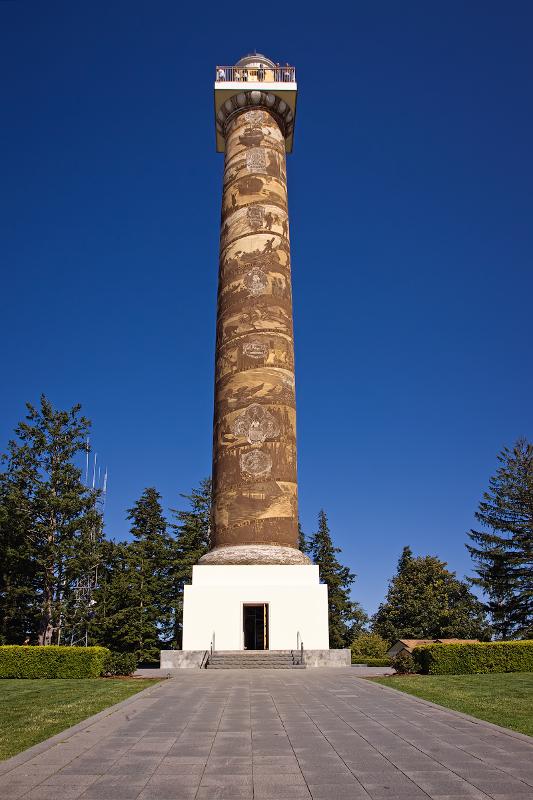
It’s said that Clark Gable’s acting career began at the Astoria Liberty Hall on 12th and Exchange streets. A commemorative plaque is all you’ll find today, but each October the nearby Liberty Theater (also called the Astor Building), built in 1925, hosts a film festival. Other performances include the United States Air Force Band of the Golden West Commanders Jazz Ensemble, August 30, 2015 at 4 p.m., admission is free, 1203 Commercial St., 503-325-5922, www.Liberty-Theater.org
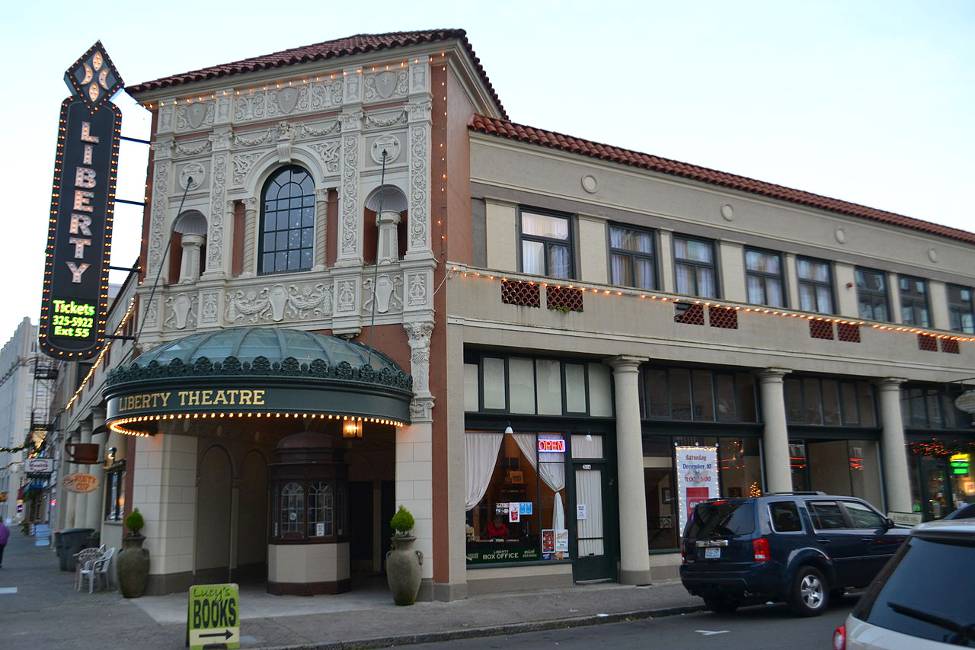
Ever wonder how, where, or why cable TV was invented? The first TV station in the Northwest was inaugurated in 1948, in Seattle. However, being 125 miles away, the signal was unavailable in Astoria. L.E. “Ed” Parsons, who lived across the street from the eight-story Astoria Hotel, the area’s tallest structure, requested permission to put an antenna on the hotel’s roof. He then ran a coaxial cable from the antenna into to his apartment. It worked, and as of Thanksgiving Day that year, Parsons and his wife were the only people in Astoria able to view television. Soon the Parsons were nearly overrun by folks who wanted to see the television, so Ed ran another cable into the lobby of the hotel, where they set up a television. By the end of 1948, a nearby music store was the third hook-up, after which time Parsons began setting up cable service to local households. The Astoria Hotel was later named the John Jacob Astor Hotel, but it fell into disrepair. In 1979 the building was listed on the National Register for Historic Places, and in 1984 a plan was approved to allow a group of investors to renovate the structure and turn it into an apartment building, which it remains today. Constructed of reinforced concrete, the building features Gothic decorative elements. The two-story lobby features Corinthian columns. The lower two floors are reserved for commercial use and offer everything from herbal teas to antique and banned books to 8-track tapes, 342 14th St.

A nod to the Finns who settled Astoria in the 18th century, Finn Ware is a gift shop that specializes in Scandinavian goods, everything from Marimekko textiles, to Scandinavian kitchen ware, specialty foods, and Christmas goods. Open Mon–Sat 10 a.m.–5 p.m., Sun noon–4 p.m., 1116 Commercial St., 503-325-0214 or 800-851-3466, www.FinnWare.com
Where to Stay When You Visit Astoria Oregon
You can’t get much closer to the water than this: the upscale Cannery Pier Hotel and Spa actually juts about 600 feet into the Columbia River. Designed by Astoria native Robert Jacob, the hotel honors the history of the original Union Fisherman’s Cooperative Packing Company Cannery on its original dock site while providing all the amenities of a luxury boutique hotel. The building is all red brick outside and all warm yet modern inside, with huge floor-to-ceiling windows, exposed steel beams, and wooden trusses in the lobby. Sumptuous rooms and suites and feature gas fireplaces, private decks with water views, mini-fridge, and WiFi. Suites boast whirlpool tubs, wraparound decks, and living rooms. Your stay includes complementary continental breakfast, an evening wine hour, local transport in a 1930s vintage auto, and loaner bikes. The Columbia River Maritime Museum is only 1.5 miles away. There’s also a day spa and hot tub, fitness facility, and meeting room, 10 Basin St., 503-325-4996 or 888-325-4996, www.CanneryPierHotel.com
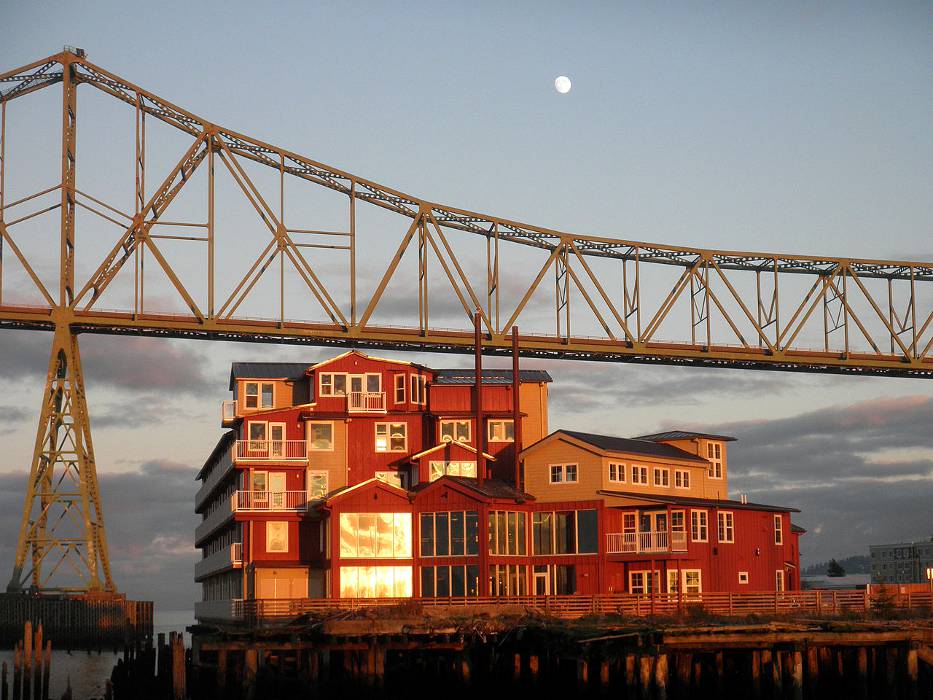
Where to Eat When You Visit Astoria Oregon
Buoy Beer Co. is a wharfside brewpub with fabulous local fish and plenty of craft beers on tap. Part of the dining room floor is glass, and you can look through at the huge sea lions normally basking below. Indoors or out, you’ll look out over the river as you dig into Red Hot Fish & Chips: beer-battered rockfish tossed in buffalo sauce with ranch or blue cheese and served with fries. Another excellent choice is the Pan-Fried Petrale Sole, with lemon and herb butter sauce, grilled veggies, and orzo. Land lubbers will go for the Buffalo Bison Burger, with buffalo sauce, Rogue blue cheese, lettuce, onion, and served with fries, entrées $11–$26. We loved the Oatmeal Stout, rich in chocolate and malt tones. The malty, hoppy, NW Red Ale was our other favorite. Open Sun–Thu 11 a.m.–10 p.m., Fri–Sat 11 a.m.–11 p.m., 1 Eighth St., 503-325-4540, www.BuoyBeer.com
Beer and oysters—the two come together perfectly at Albatross & Company, just off the wharf. This new tavern by French-Canadian chef Eric Bechard is worth checking out if you’re an oyster fan. The menu changes constantly with everything from corn dogs and hamburgers to slow-cooked duck leg with morels, fried oyster sandwich, or steelhead tartare. Open Tuesday – Saturday, 5 p.m. – Late. 225 14th St., 503-741-3091, www.AlbatrossAndCompany.com
For the best in thick milkshakes, stop by Custard King, near the Maritime Museum. They’ve newly renovated their classic neon sign. 1597 Commercial St., 503-325-5464, www.Facebook.com/CustardKing
Fish-and-chips? Look no further than Bowpicker, a funky little gillnet boat converted into a fish-and-chips Valhalla. A full order of five pieces of beer-battered tuna with fries is $10, no credit cards. Generally open Wed–Sun 11 a.m.–6 p.m., weather permitting, and as long as they don’t run out of fish! 1634 Duane St., 503-791-2942, www.Bowpicker.com
In Conclusion, You Need to Visit Astoria Oregon
200 years ago, Thomas Jefferson and John Jacobs Astor imagined this spot, at the mouth of the Columbia River, as a jumping-off spot to China, Europe, and endless riches. Nowadays, we can hop on an airliner and reach any corner of the globe. But Astoria is wonderfully rich just as it is: a lovely seaside, riverside community where new and old mix it up to provide the perfect summer getaway.
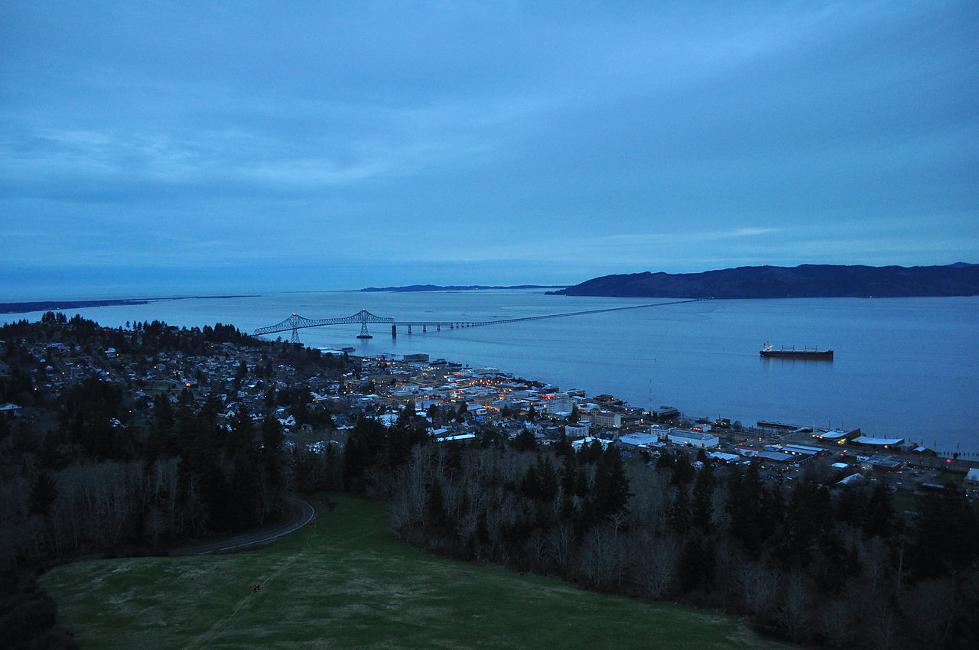






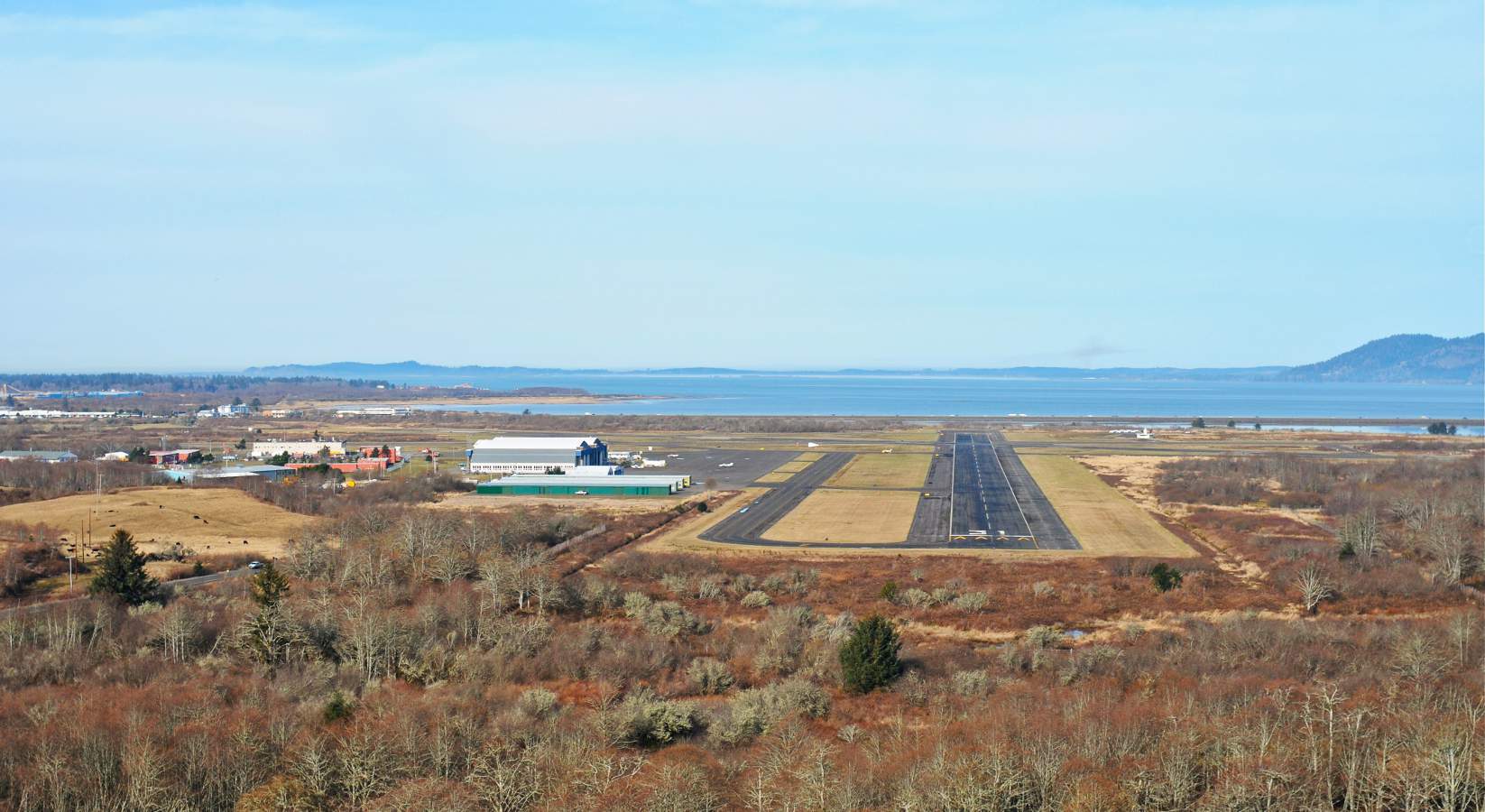
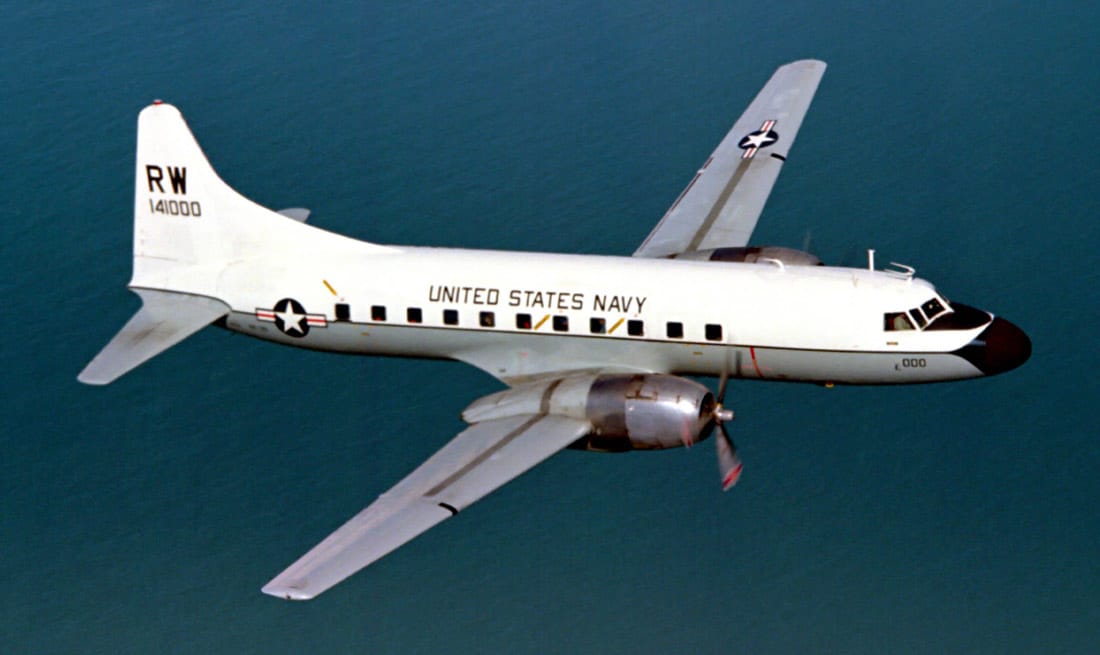



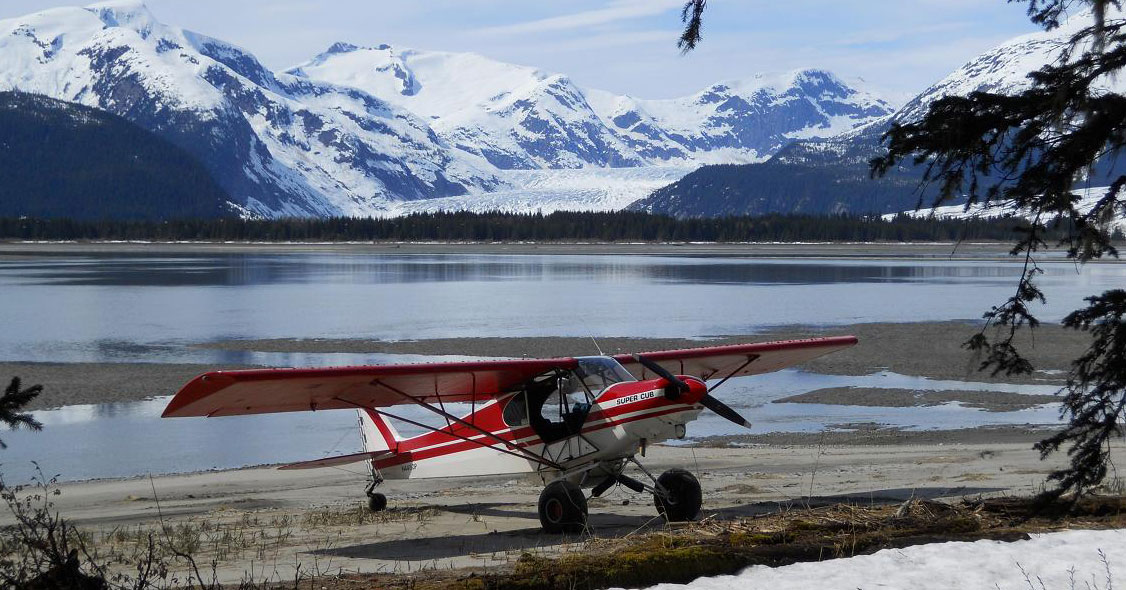
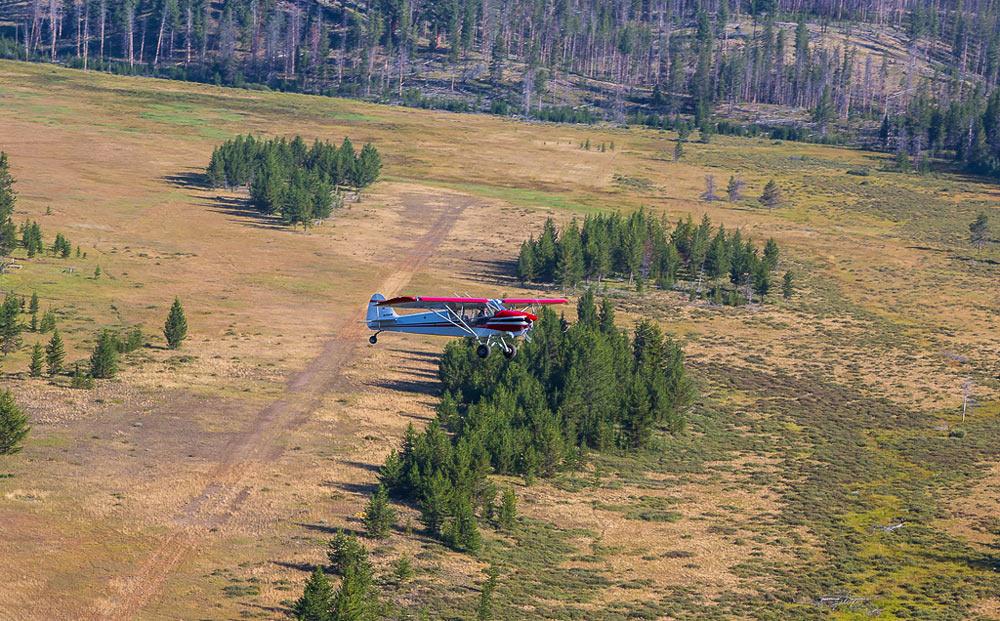
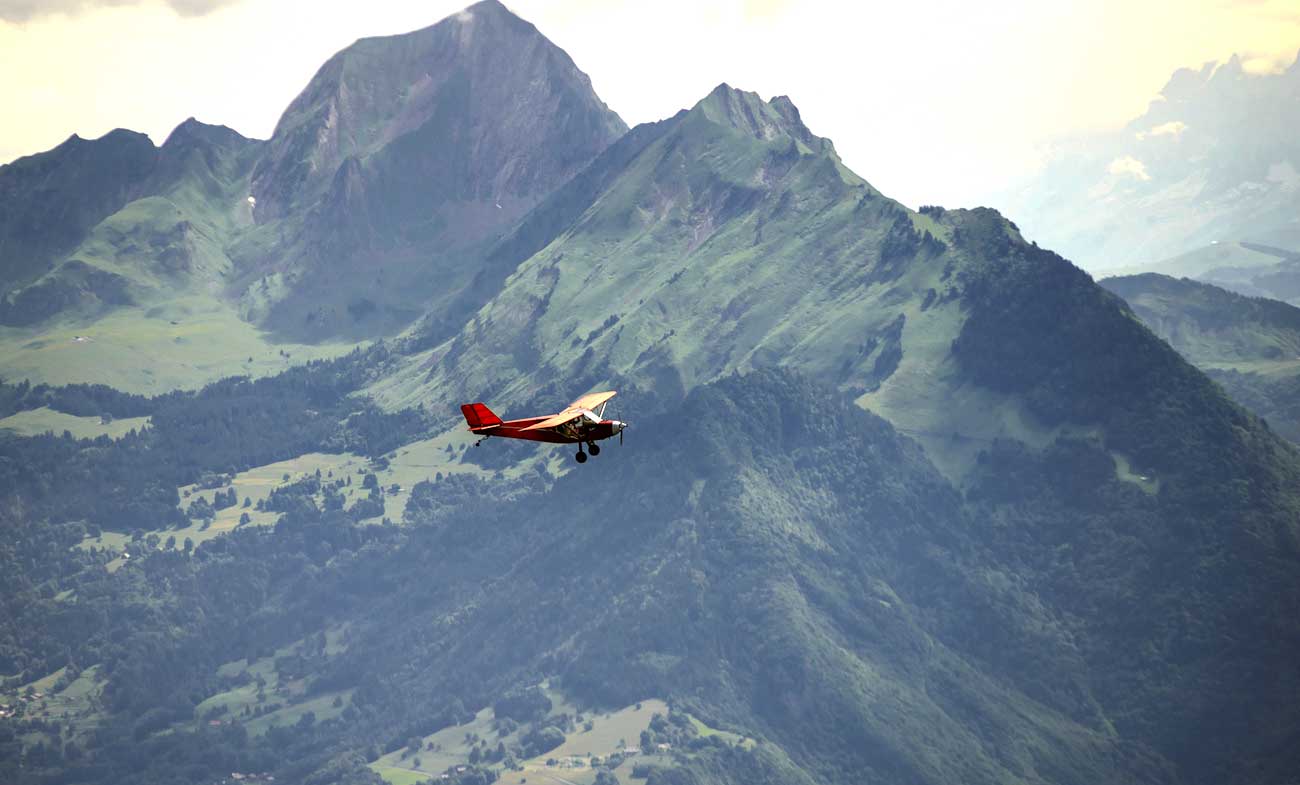

Leave a Reply